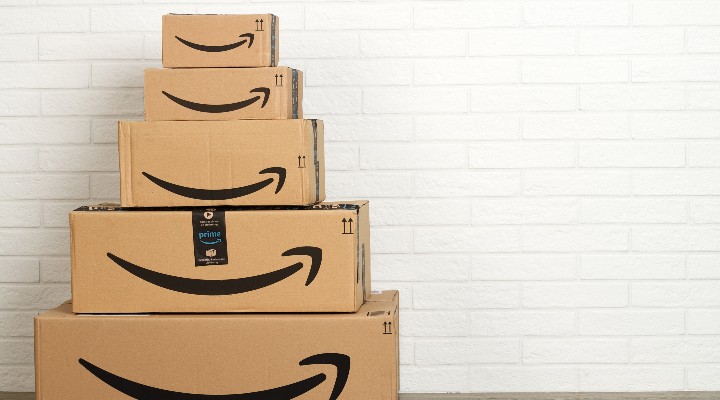Amazon’s advertising revenues are forecast to reach $30 billion this financial year, close to 6 per cent of its retail sales, and many multiples beyond that of most traditional retailers. Its secret is its data-driven and personalised model. Omnichannel retailers need to find ways to use the data they hold to personalise ads to customers shopping in stores if they want to match Amazon’s advertising success. A few are now starting to take steps in this direction. Amazon’s advertising succes
cess
The biggest story in FMCG marketing over the last few years has been the rise of Amazon to become the third player in digital advertising, behind only Google and Facebook. FMCG brands are willing to pay Amazon such fees because it has offered a new and data-driven opportunity to capitalise on its relationships with end consumers.
Whereas traditional retail advertising, such as instore signage and ticketing, gives brands access to the retailers’ customers as a general audience, Amazon has taken a personalised approach. As with any retailer, Amazon’s model is based on giving FMCG brands access to its customers. But two additional elements set it apart from traditional retail advertising:
Using the data it gains from its customers’ searches and behaviour, Amazon sells personalised ads that reflect the audience’s interests. For example, if I search for “men’s shampoo for dry hair” on Amazon.com.au, the team at Head & Shoulders will be confident that purchasing an ad stands a good chance of being relevant to me.Amazon also offers FMCG advertisers the ability to close the loop and track the customer through to redemption. In the example above, the Head & Shoulders team can see whether I subsequently bought the product, enabling them to directly measure the ROI of every dollar spent.
The combination of these two factors gives Amazon a significant advantage over other advertising options for brands. For example, although Google offers the ability to personalise ads based on search history, it can’t follow through with a closed-loop model that proves the ad led to a purchase in a store. Most instore retail advertising faces an even bigger challenge, since it is neither personalised nor closed loop.
A new model for instore advertising
Retailers with stores have an opportunity to sell high-value advertising because they have access to their “audience” close to the point of purchase – quite literally at the shelf-edge. This gives retailers an advantage over both traditional media channels, such as TV and print, and digital media channels such as Google or Facebook. These alternatives provide access to audiences at earlier stages of the purchase process. The challenge for store retailers is finding ways to serve personalised ads to customers in stores. A couple of innovative approaches demonstrate how things might evolve.
Connected shelf coupons
In June of this year, Neptune Retail Solutions in the US launched at-shelf digital signage that drives shoppers to their retailer app while they are in the aisle. Personalised digital coupons can be “unlocked” directly in their rewards account for immediate savings. I expect this instore advertising model will be attractive to FMCG brands because it delivers all three of the benefits seen in Amazon’s online model.
Scan&Go
“Scan&Go” is a new way of shopping instore, in which customers add products to a virtual cart as they shop – usually via an app on their phone – eliminating the need for team members to scan items at checkout. Driven by the need for contactless shopping due to Covid, Scan&Go has been growing its share of sales globally.
A customer using Scan&Go connects with the retailer in a completely different way, via a real-time digital connection to the smartphone. This opens up the opportunity for personalised ads, served using the same model as Amazon, since the connection provides 100 per cent visibility of customer actions as they take place.
Consider this example:
A traditional grocery retailer with a loyalty program can see that I’m a cat owner and send me an email highlighting this week’s cat food promotions.A Scan&Go grocery retailer can see that I’m a cat owner and that I just walked past the pet food aisle without buying any cat food … and then send me a personalised offer in real-time to encourage me to visit the pet food aisle before I leave the shop.
In effect, Scan&Go opens up the same advertising model to store retailers that Amazon delivers to brands.
Privacy concerns
One concern about moving to a more personalised advertising model is that customers may be worried about their data being shared with FMCG brands. However, my experience is that customers are more likely to engage with targeted ads than mass offers. Amazon is believed to have a purchase conversion rate of close to 10 per cent, ie 10 per cent of customers who click on an ad end up buying the product. This is far in excess of most websites and highlights that a personalised ad strategy not only delivers better results for advertisers but also increased engagement from consumers.
So, exciting times ahead. In my view, we’ll see a significant gap in advertising revenues between retailers who can spot the opportunity to personalise instore ads and those who cling to the old model and miss out.
This article was originally published in the October 2021 issue of Inside FMCG magazine

